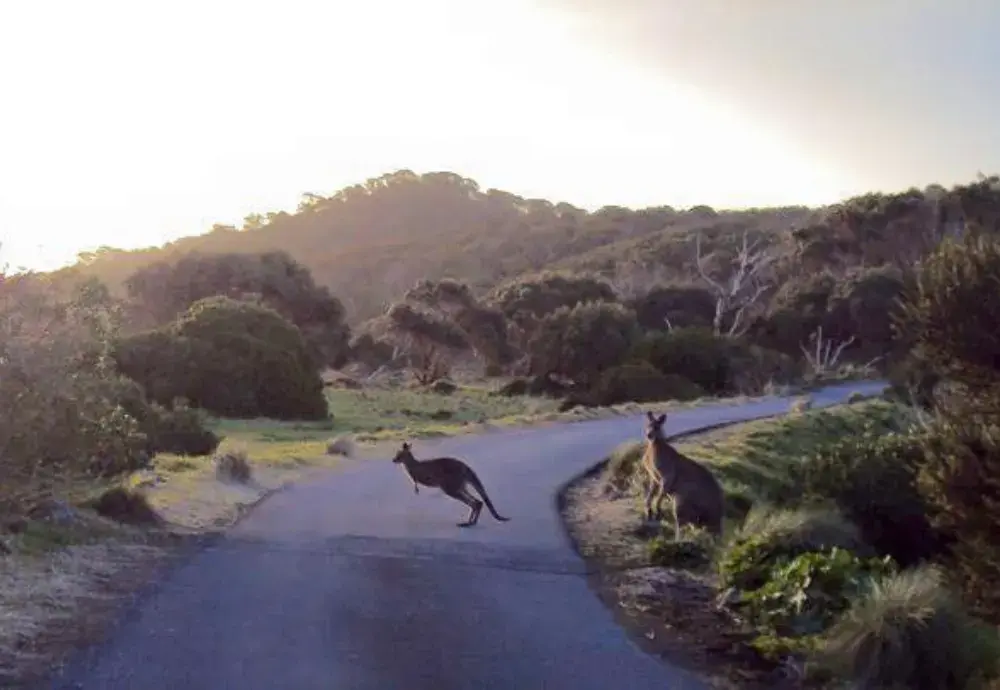Celebrating WIRES volunteers this International Volunteer Day
December 2025
For emergency rescue support 24/7 please call 1300 094 737

Motor vehicle accidents pose a significant threat to Australia’s wildlife populations, leaving an indelible impact on ecosystems and biodiversity. Data revealed in AAMI's latest animal collision report provides valuable insights into the true scope of the issue, emphasising the urgent need for increased awareness and proactive measures in winter especially, a peak period for animal-related accidents.
According to the AAMI animal collision report, there were over 19,000 animal-related collisions reported across Australia in 2022. The data reveals that kangaroos, wallabies, and wombats are among the most commonly affected species. Sadly, these numbers likely represent only a fraction of the actual incidents, as many go unreported.

Top hotspots for animal collisions, based on over 17,000 AAMI animal collision claims 1 Jan - 31 Dec 2022
As we move into winter and the days get shorter, driving conditions can be darker than usual.
“The darker winter months are the most perilous time for wildlife on our roads,” shares WIRES’ Campaign Manager Kristie Newton. “Hitting wildlife can not only cause vehicle damage and emotional distress for the driver involved, but also the loss of native animals, which has a huge impact on Australia’s biodiversity and endangered species,"
“These types of collisions are particularly detrimental to koala populations, which are in serious decline across the country. A colony known as the Campbelltown koalas are the only growing population in NSW, however in recent years the recorded number of koalas hit and killed by motorists have doubled, with road accidents now the leading cause of koala deaths in the region," she said.
The detrimental impact of these accidents extends far beyond the immediate loss of animal life, affecting ecosystems and biodiversity.
To address wildlife road collisions, the report suggests that reducing speed limits in known wildlife hotspots and installing wildlife crossing signs can help raise awareness and encourage drivers to be more cautious. Constructing wildlife underpasses or overpasses can provide safe crossing options for animals, reducing the risk of collisions.
Educating drivers about the importance of being vigilant is equally important, especially during dawn and dusk when wildlife activity is high.
Kristie Newtown shares the following tips on checking the welfare of wildlife impacted by vehicle collisions:
It is crucial that we work collectively to raise awareness about road safety for wildlife and implement preventive measures to minimise collisions. By taking steps to protect wildlife, we can contribute to preserving Australia's unique biodiversity and ensure a sustainable future for both humans and animals alike.
Read AAMI’s animal collision report
WIRES has been rescuing and caring for sick, injured and orphaned native animals for over 35 years. Today it is Australia’s largest wildlife organisation, though our mission remains the same - to actively rehabilitate and preserve Australian wildlife and inspire others to do the same. We rely on the generosity of the community to carry out our wildlife rescue and rehabilitation. If you would like to support WIRES' work, you can make a tax-deductible gift or become a wildlife rescuer.
Stay in touch and get our regular rescue stories, WIRES updates and a free copy of our 15 Ways to Help Wildlife ebook
November 2025
November 2025
September 2025
August 2025
August 2025
August 2025